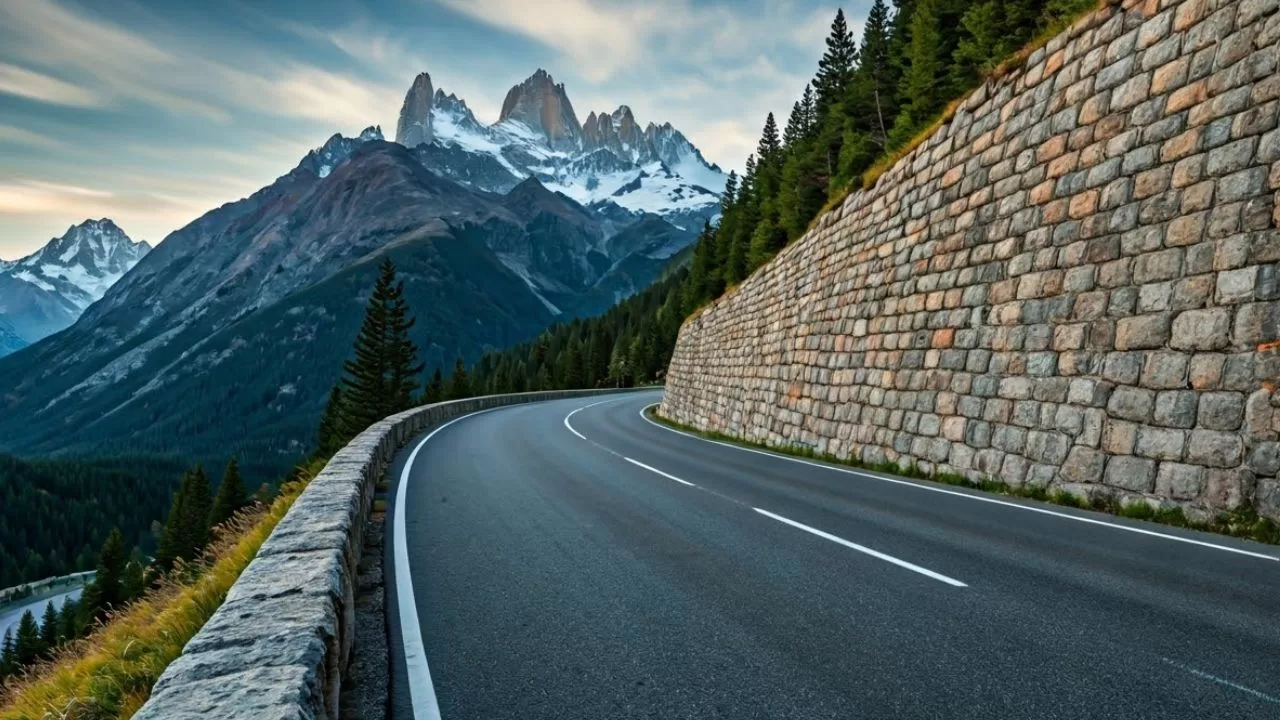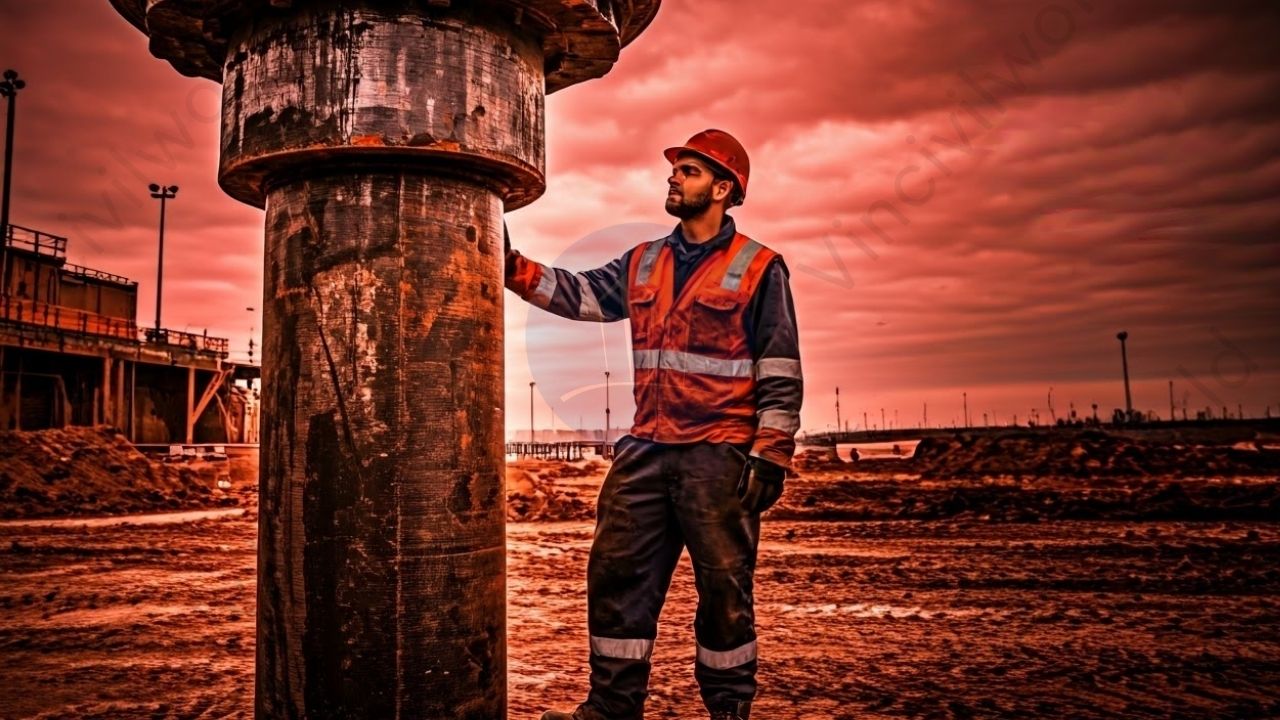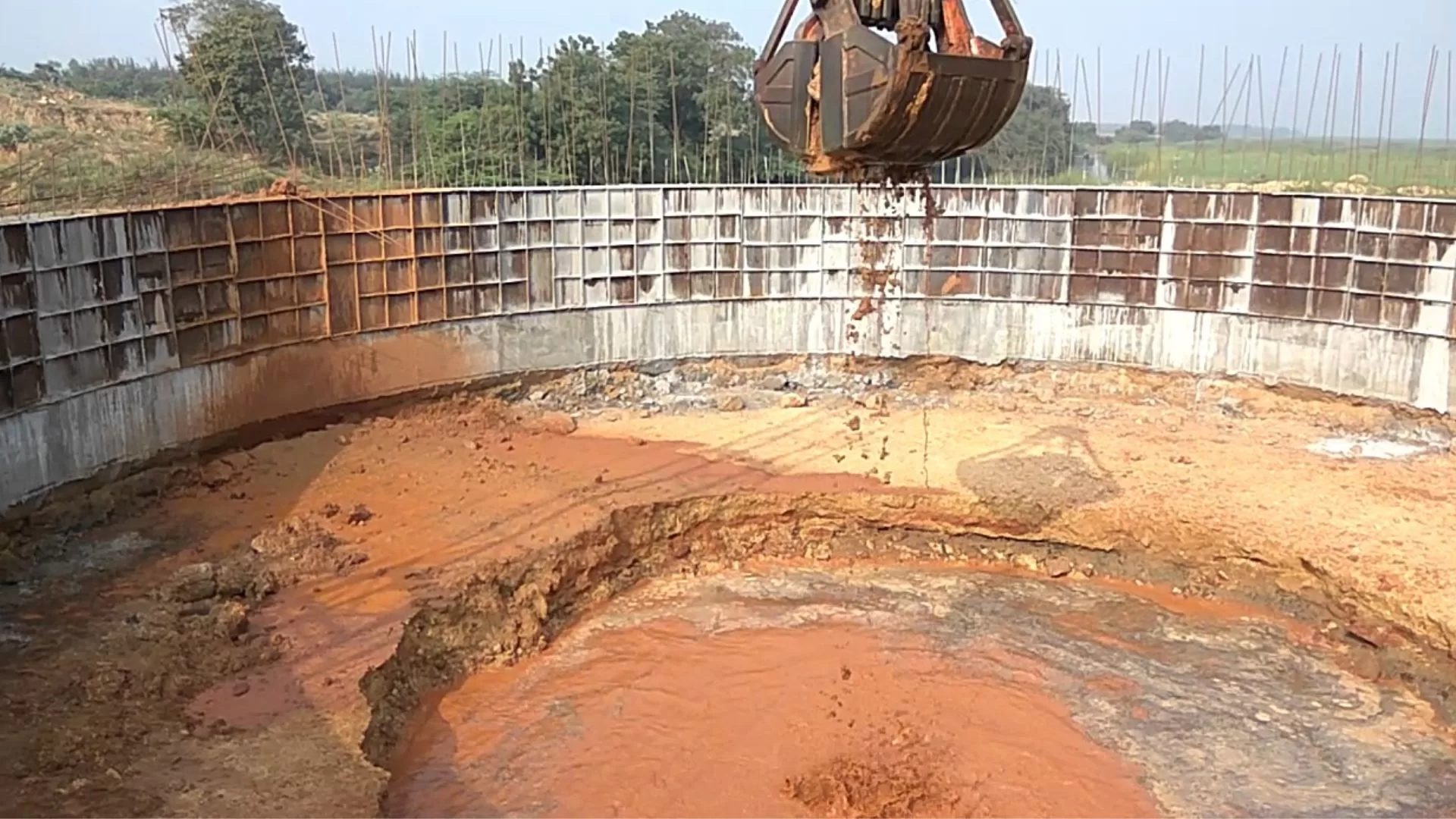MSE retaining walls means mechanically stabilised earth or reinforced earth. This is an earth retaining system where compacted granular soil is reinforced with horizontal layers of steel strips or geo-synthetic materials. This compacted earth is held together with thin facing elements made of Precast concrete, shotcrete or weld mesh reinforced panels. They are used extensively for constructing retaining walls, bridge abutments, highway wall systems, dykes, etc. MSE retaining walls cost almost half what a concrete structure would have cost for similar uses.
Components of a MSE retaining wall
a) Reinforcing element
b) Back fill materials
c) Fascia element
Reinforcement element
The reinforcements are used to reinforce and provides the requisite tensile strength to hold the soil together. Two types of reinforcing elements are used in MSE walls. They are metallic and polymeric reinforcements. Metallic reinforcements (In-extensible) include Galvanised iron ribbed strips (50mm-100mm) or ladder strip arrangements.

Polymeric reinforcement (Extensible reinforcement) could be geo-grids or geo-textiles, which are preferred in corrosive environments. For any vertical and horizontal obstructions, reinforcements are bend at an angle, not more than 15 degrees.
Appropriate connections hooks are embedded behind the fascia walls for the anchorage of geo-grids and metal reinforcements.
Back fill materials
The select back fill materials have to be cohesion-less and have to meet the criteria of gradation, plasticity, organic content, and electrochemical properties, The materials should be free drainage and with minimum fine content. The soil friction angle has to be checked by shear tests. The angle of interface friction between compacted fill and a reinforcing element shall not be less than 30 degrees when measured as per IS 13326 part 1.
Fly ash can also be used as back fill and shall be as per the standards. The select back fill lift should be placed parallel to the wall and starting approximately three (3) feet from the back of the wall panels. The back fill should be placed in 6″ compacted lifts. Soil materials can also be placed without reinforcement between the stabilised zone and natural surface of the ground called retained back fill.
Facing elements
Facing elements are used to retain the filled materials, prevent local slumping of steeply sloping faces, and to be in line with the structural and design, and aesthetic requirements.
The facings are made of precast reinforced cement concrete, plain concrete hollow blocks forum filled, etc.
The embankment area has to be provided with a suitable drainage system to avoid water logging. (Ref fig) Drainage layers have to be provided on the backside of reinforcement zones for enabling proper drainage of water.
A Drainage layer of around 2-3ft width is provided on the backside of the facing wall using free-draining material to enable proper drainage of water.

Jointing and filling materials
Rubber or wooden bearing pads are used between horizontal joints of facing elements so that there shall not be any concrete to concrete joints. The interior panel joints are sealed with geotextile filler cloth in the horizontal and vertical directions as shown in fig. This is done to ensure that no interior back fill materials sweep through the joints.

Advantages of MSE walls
Advantages in terms of economy, ease of construction and rapid and speedy construction with minimum disturbances to traffic and other services makes MSE walls one of the most favourites and preferred retaining wall system. A variety of materials and customisation options in terms of design and construction made it one of the most popular earth retaining system. The fascia elements, the back-fill, and the reinforcing system combine to form a gravity retaining structure that relies on the self-weight of the reinforced soil mass. This self-weight resists the lateral pressure from the earth and the service loads, seismic loads, and hydro static pressure.
- They can be designed to take extremely heavy loads like bridge abutment footings, crane loads, service loads, etc
- MSE walls can resist seismic and dynamic forces and transfers the bearing pressure to a wide area.
- Faster construction than conventional retaining walls.
- Less site preparation is required and can be constructed in confined areas where other retaining walls are impossible to construct.
- There is no supports, finishes and curing time.
- The granular back filling enables free drainage of water through the exposed panel joints and reduces hydro static pressure.
- The fascia walls are lightweight and are precast and conveyed to the site and lifted using simple lifting equipment. These walls can be made to any height and can resist unequal settlements
- They can be customised to any geometry and the construction process is very simple. They do not need any heavy types of machinery and specialised workers.
- The fascia can be customised for designs and logos and gives superior and elegant finished and aligned walls.
- Any obstructions inside the back filled areas can be managed by adjusting the angle of the reinforcing elements.
- They possess a very good service life in extreme loading and complex applications.
Disadvantages of MSE retaining walls.
- MSE retaining walls require granular material in huge quantities. Areas where there is a scarcity of granular material the construction cost increase and make the structure uneconomical.
- The corrosion or reinforcement and deterioration of geo-grids on exposed to sunlight has to be addressed. The reinforced component must be designed to withstand erosion and corrosion processes which can highly deteriorate the mechanical behaviour of the composite structure.
- Proper drainage system should be provided.
- The wall must obtain a minimum width in order to acquire adequate stability
Also read
INSTALLATION METHOD OF MSE RETAINING WALLS







What an informative article you have here! Surely everyone who’s going to read will learn something from this, big or small, it will help them a lot on deciding the correct wall for their establishment. We at Johnson City Walls & Patios can get you on the right track for that, whether it’s for building a home for you and your family or premises for your own organization!
A retaining wall serves to keep soil in place. This mostly applies to landscapes featuring small hills where these walls act as a necessary barrier to prevent the soil from sliding forward in a landslide.https://easttnoutdoorservices.com